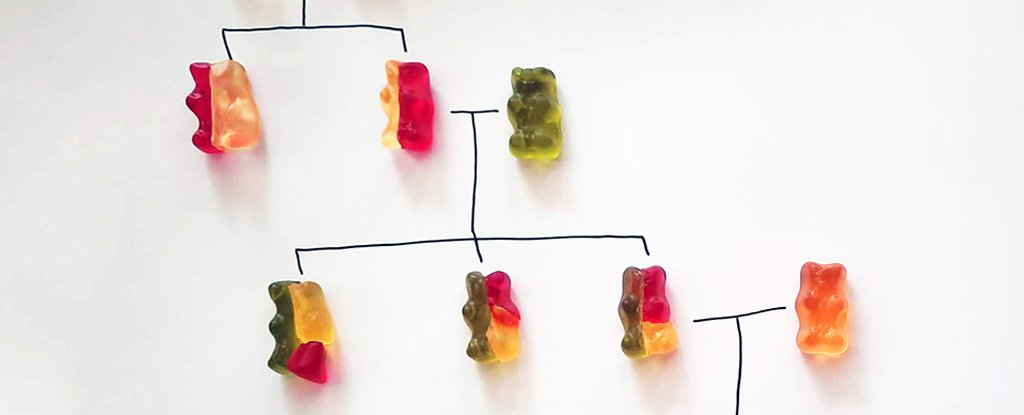All About DNA Testing
Always wondered what we’re talking about with DNA? In this post we’ll cover how it works, and then what you may be able to learn from the test results. We will look at the benefits of testing, as well as some of the possible down-sides.
At the time of writing, the major providers have Black Friday sales on, making this the best time to get started down the DNA trail.
How it works
You will order a test, or we can order it on your behalf. The test will be shipped to your address (or P.O. Box). When the test arrives, it will include instructions for taking a sample, a bit like a COVID RAT test. Some tests involve spitting in a tube, and others involve a cheek swab.
Read more about the AncestryDNA test process
After carefully doing the test procedure, you seal up the package and put it directly in the mailbox – the kit includes prepaid postage back to the laboratory.
After sending back the test, there is typically a delay of about 8 to 12 weeks for international shipping followed by the laboratory process. You will be notified when your results are ready; and then we can get to work to translate those results into what it means for your family tree.
The major test providers
DNA testing for genealogy is performed through your choice of one of the major test providers:
- AncestryDNA
- MyHeritage DNA
- FamilyTreeDNA
- LivingDNA
- 23AndMe is currently insolvent and so we do not recommend testing through them.
Kiwi Heritage Tracers has no affiliation with any of the above providers.
However, our current advice to you is to order an autosomal test through AncestryDNA. We will go into more detail about the different test types and providers in another post; but in brief: although MyHeritage is slightly cheaper, AncestryDNA gives the best bang for your buck, because we can copy your AncestryDNA raw test data over to the other three sites, for no extra charge.
How does the test actually work?
The human genome is fairly big – over 3 billion base pairs of DNA! However, 99.9% of that is identical for all humans. The genealogical DNA test will sample that last 0.1%. Specifically, the laboratory looks for tiny mutations called SNPs – pronounced snips – which distinguish your ancestors from other unrelated groups.
DNA Gummy Bears - ScienceAlert.com
Your DNA is a random mixture of your ancestors’ DNA; you carry around a little piece of every ancestor within the last 4 generations, and little pieces of most of your ancestors for several more generations prior to that.
What can we learn from a DNA test result?
At the most basic level, your test result can be downloaded as a list of SNPs. Here’s where things get interesting – and subjective. Typically, the major test providers will analyse your SNP list to pick out the following three things:
- Health & well-being info – what are you genetically predisposed towards, etc.?
- Ethnicity Estimate – dividing your DNA up amongst historical ethnic groups.
- Family Matching – who are you related to?
Kiwi Heritage Tracers is all about point 3, the family matching. We’ll leave the other two points for your entertainment – the science is far from settled on those points!
Family Matching with DNA
The basic gist of it is that when comparing your SNP list with that of other people who have also tested: if a stretch of DNA has identical SNPs then it shows that you and the other tester must share a common ancestor, since it would be almost impossible for the same sequence of mutations to happen by chance to two different people. (Refer back to the gummy bear tree!)
The pool of DNA testers is quite large – roughly 5% of the population, in NZ/Australia/UK/Ireland/USA/Canada. It’s normal for your test to come back with more than 10,000 matching people; although only a few hundred of those at most will actually be close enough to be useful.

The test throws up all these little connection threads. Like jigsaw puzzle pieces, but most of the pieces are missing from the box!
Where Kiwi Heritage Tracers comes in, is to assemble those pieces we do have into the outline of the bigger picture, and figure out what might have been in the gaps.
The test provider will make a half-hearted attempt at this, but we can do so much more, by combining matches from several sites and using a ranged of advanced analysis tools; correlating with documentary evidence where possible.
Typically, we can figure out your biological ancestors going back several generations, just from the Family Matching analysis.
For example, the ancestors with the DNA marker on my family tree have all been confirmed through DNA testing.
What might go wrong?
Although DNA testing is fantastic for confirming your ancestors, there are some potential problems:
- Skeletons in the Closet. Your test will uncover it, if an expected ancestor is not actually a biological ancestor. Not just on your own line, but perhaps on one of your cousins’ lines if they also tested. It will also reveal half-siblings you didn’t know about. Although many people are glad for the knowledge and embrace the additions to their family; many others have regretted taking the test after experiencing family upheaval as a result.
- Privacy. You’re sending your genome to a large multinational corporation. What could go wrong?
The companies provide a privacy statement about what they will do with your sample, and they are legally
required to comply with the GDPR privacy laws; but of course, there is always some level of trust involved.
Privacy is an issue each person has to come to terms with individually.
- Our view: If someone wants my DNA, all they’ve got to do is go through my bins out the front. And if a future tyrannical government wants to persecute people, history has clearly shown they don’t need DNA to justify it!
- Crime. If your DNA is sitting on a police file unidentified… you’re going to be caught! Law enforcement
can and do liaise with consumer DNA providers; hundreds of cold cases have been solved this way since the
era of consumer DNA testing. The provider’s Terms & Conditions may well say that they won’t do
this, but can you be sure that won’t change going forwards?
- Our view: In this scenario you’re likely to be caught anyway, as there are enough of the general public
tested that you can be tracked down via similarity between your sample and your cousins’ samples.
By the way, your sample might not implicate you personally, but it might be the factor in leading law enforcement to one of your relatives, even if they didn’t personally test.
- Our view: In this scenario you’re likely to be caught anyway, as there are enough of the general public
tested that you can be tracked down via similarity between your sample and your cousins’ samples.
- No matches. If your parent is a native of a country where consumer DNA testing is rare – for example, France where it is illegal – you won’t have many matches. However, even in that case, there is a reasonable chance other emigrants have tested anyway, or will test in future.
Conclusion
By ordering an autosomal DNA test, a spotlight will shine on your tree of biological ancestors, for better or worse. If you’re keen to start down this journey, contact us right away!